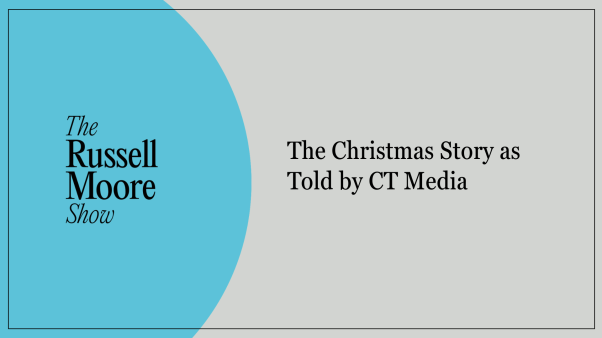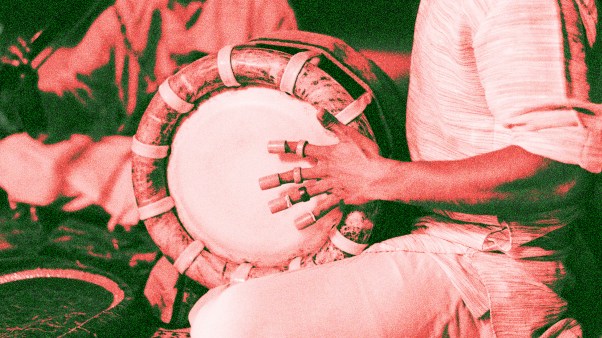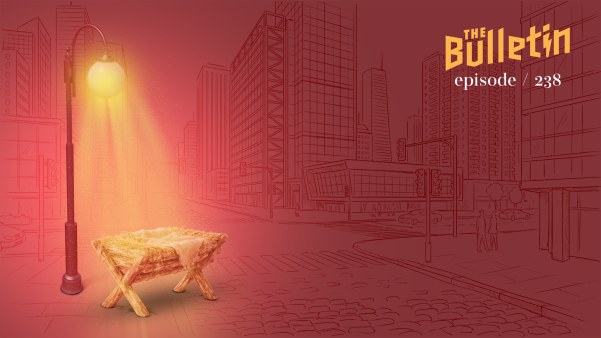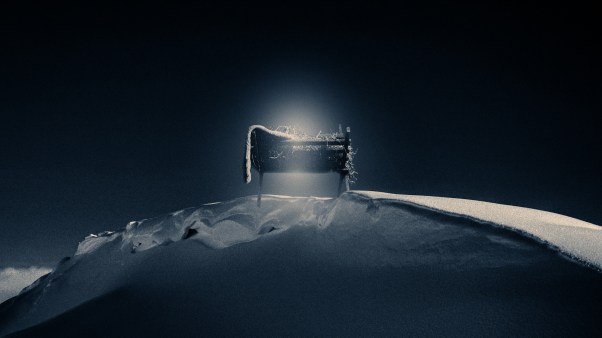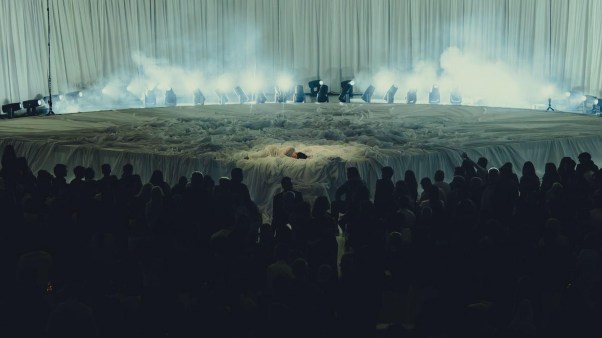The language of prayer and the language of poetry share strong similarities. Prayer, like poetry, allows for, and even invites, the interplay between truth and beauty. A new book explores this connection between rational thought and aesthetic expression. Romantic Prayer: Reinventing the Poetics of Devotion, 1773–1832 (Oxford University Press, 2021), by Christopher Stokes, senior lecturer in Romantic literature with the University of Exeter, is a scholarly examination of several key poets of the British Romantic period, from pre-Romantic William Cowper to second-generation Romantics Percy Shelley and Lord Byron and a range of poets in between.
The poets examined in this book reflect shifts in forms of religious devotion. Stokes argues that the theology of prayer reflected in this age and its poets parallels the growing importance of individual practices in religious life, when devotion became as much about doing as believing. Poetry, likewise, was increasingly becoming a personal practice, not merely an objective art.
Living in a time of ongoing and culminating secularization, these poets illustrate the ways Christianity helped birth secularity, as debates about the modes of Christianity evolved into debates about Christianity itself. Even so, as Stokes shows, poetry can be a way to preserve and practice religious faith amid growing skepticism.
You call prayer “an organ of faith” because of the way it “imprints” an understanding of God in the one who prays. Poetry, too, is a language that forms or imprints itself on us. The foundation of your analysis is that the language of prayer and the language of poetry are deeply connected. How are they connected?
There’s certainly a deep historical connection between poetry and prayer. As I note in the book, the very earliest surviving poem in English, Caedmon’s “Hymn,” is a kind of prayer. And across the centuries, poetry has been energized by its relationship with private prayers, with hymnody, with liturgies, and with great scriptural texts like the Psalms or the Song of Songs. There are certain eras—I’m thinking of the 17th century and the Victorian period, for instance—when devotional poetry really is as good as anything else being written in English literature, and you see poetry drawing this tremendous beauty and complexity from the great religious and theological shifts of its times.
So, it’s impossible to think about the development of English verse—and literature never sheds its histories—without thinking about prayer as well. The evangelical tradition often slighted set or memorized prayers and saw prayer as a much more visceral cry from the heart. Poetry also took inspiration from that notion.
More abstractly, there is also something interlinking the experience of prayer and the experience of lyric poetry (poetry spoken by an “I”), which has always captured the imagination of writers. Perhaps it has to do with the intimacy of voice, or the overtones of confession, or the idea of speaking in this strikingly unusual way (that prayer and poetry share) whereby there isn’t necessarily an addressee present in the conventional way but there is still a fundamental sense that this language will be heard. I’ve always been fascinated by those links.
The Romantic poets were, in many ways, reacting to seismic shifts in the 18th century, shifts brought about by the Enlightenment, by the factions within and outside the established church, and by the increased subjectivity that both enacted and reflected these changes. You call this “a time in which prayer was a language under pressure.” What do you mean by this?
Maybe prayer is always a language under pressure! The Enlightenment gets mischaracterized, I think, as a relentless critique of religion. Actually, the radical atheist or anti-Christian polemic we associate with, say, French thinkers, was a pretty extreme wing of a much broader sensibility across Europe, and most parts of it had no real desire to exit Christianity at all.
However, it is true that many Christian thinkers in the era were obsessed about the reasonableness of religion as a belief system—and prayer fit quite awkwardly into that rationalizing project. For example, the idea that God would intervene supernaturally in the carefully constructed natural universe he had elegantly and intelligently created just because someone prays—well, that just didn’t sit well.
As the century went on, I would summarize two opposite reactions to this “reasonableness.” On the one hand, some Christians wanted to rationalize further, and their versions of prayer became closer to contemplation or meditation. On the other, the Methodists and the evangelicals offered something much more unapologetically spiritual and otherworldly, addressing a devotional need but provoking a lot of suspicion and even mockery from the mainstream. So, it’s a fascinating time when multiple ideas of prayer are circulating.
You describe the “secular” as “a space opened up between theism and atheism.” Can you elaborate on this idea?
It’s a way of looking at history in a more complex way. It seems broadly clear that over a few hundred years in the West, we moved from a state of affairs where Christianity was this universally shared backdrop to a present moment where this isn’t the case. Traditionally, the secularization hypothesis has described this change as a one-way street whereby religion inexorably gives more and more ground to reason, humanism, science, or whatever. It’s a narrative of inevitable binary conflict between religion and modernity. The problem is that we generally find that black-and-white ways of looking at history nearly always fail the fine detail. Things such as science weren’t always the opposites of religion, and religion continued to generate profound ways of inhabiting the world across the 18th and 19th centuries and beyond.
I’m trying to note that what the secular involves is not atheism triumphing over theism and hence bringing in “the modern world” as an atheist world, but rather a range of theists, a range of skeptics, and a range of agnostics all developing their ideas in a culture which no longer has that common background of shared Christianity. Basically, it’s just an acknowledgment that Christianity (or any religion) doesn’t stop having intellectual vibrancy just because other forms of belief or nonbelief suddenly share its cultural space; there are modern expressions of the Christian tradition. Put that way, you have to question why scholars ever thought that wasn’t the case!
Within the Evangelical Revival, prayer becomes not just an act of reasonable devotion or duty but, as you write, “a struggle, a wrestling, a matter of life or death.” You further explain that “Evangelical prayer involves a transformation and transposition of self,” and that this is because evangelicalism’s sense of self involves “an experience of alterity and decentering.” How does prayer itself contribute to this kind of “intensified spiritual existence”?
I think all traditions recognized different forms and experiences of prayer, but they also privileged certain kinds as more prototypical. For the 18th-century mainstream, prayer tended to be something that composed and oriented the self. It’s all prayer as an action which places your thoughts and feelings into a structure that referred to God. For the evangelical tradition, prayer was not so much a “doing” as a state of “being”—and importantly, a state of new being.
So, prayer was a couple of things to the 18th-century evangelical. It was an invitation for a divine influx to make the self anew. It was also the language of authentic life breaking through from the depths of the soul, “an embryo of God, a spark of fire divine,” as Anna Letitia Barbauld puts it. And it’s also the record of the struggle of the sinner undergoing that transformation. It’s all much more dramatic than the mainstream account, because it’s about change in your whole existence.
In your chapter on the poetry of the evangelical William Cowper (most famous for his collaboration with John Newton on the Olney Hymns), you address the connection between the practice of prayer within the Evangelical Revival and “radical interiority,” or a sense of an authentic self. And you describe the decline of Cowper’s lifelong fragile mental health as, in part, “the failing of prayer.” Can you explain this connection? Do any of Cowper’s most popular hymns illustrate this connection?
William Cowper’s Calvinism has always been seen as a problem. The great emotional power of Wesley and the Methodists came from the controversial doctrines of sanctification, but what if sublime confidence in salvation was replaced with a potent assurance of your failure to be saved? Prayer comes in because a prayerful state was seen as one of the likely signs of election, and in finding prayer a tormenting struggle, Cowper feared he was encountering his own spiritual nullity. Yet the advice given to an evangelical struggling to pray was, in effect, to pray more—to pray for the power to pray. This became something of a tragic circle for Cowper.
It’s probably true, and perhaps understandable, that the most popular of Cowper’s hymns take more optimistic positions, but motifs of estrangement and inadequacy are still very much present: the melancholic nostalgia of “O for a closer walk with God,” or the “poor lisping / stamm’ring tongue” envisaged in the grave in “There is a fountain filled with blood.” The circular logic is also apparent in the rhetoric of love in “Hark, my soul, it is the Lord,” a poem whose beautifully tender images of care anticipate some of the quieter recesses of prayer in Cowper’s later long poem The Task.
For Anna Letitia Barbauld, a Dissenter whom you identify as “probably the most theologically literate writer” in your study, prayer is less interior, more social and physical (involving the act of kneeling, an act done in a physical and often communal space). How does that different understanding of prayer play out in her theology, practice, and poetry?
Barbauld is a fascinating figure, not least because she illustrates how poetry can not only express theology but contest it. This wing of 18th-century Dissent was increasingly embracing an ideal of prayer as solitary reflection: minimizing petition, suspicious of collective prayer, often privileging the wordless, and in some versions cautious about even addressing God. This trajectory just doesn’t make sense for Barbauld, and in her religious poetry she repeatedly evokes scenes of solo philosophical contemplation only to interrupt them with something much more intimate and direct. As her career progresses, I think she finds the most authentic religious passions are found not in a single mind reflecting on the infinite, but those generated through shared experiences within family or chapel. Elegantly, she writes in 1792: “We neither laugh alone, nor weep alone, why then should we pray alone?”
One of the most beautiful and memorable moments of prayer in all of Romantic poetry is the moment in Samuel T. Coleridge’s haunting Rime of the Ancient Mariner when a curse placed on the seafarer after wantonly killing an albatross is broken when he bursts forth in spontaneous prayer in response to seeing the beauty of sea creatures at play upon the water. What does this moment in the poem illuminate about the deep connections between prayer, poetry, beauty, and the limits and the power of language?
This is perhaps the most famous prayer in Romantic poetry. The first thing I would say is that in at least one sense I can’t tell you what this moment means. What Coleridge evokes is something uncanny and wondrous: It’s a narrative pivot around which the whole mysterious poem turns, but it is strangely depthless. Of course, critics have tried to interpret it: The mariner is having an ecological epiphany or facing up to the guilt of the slave trade or philosophically converted to the pantheistic doctrine of the “one life.” But, in effect, the point is its uninterpretability. It just falls, like grace.
As a young philosophical radical, Coleridge had been a full-blown rationalist Unitarian, but by the late 1790s he was beginning to feel the truth (his own words) of religious doctrines like original sin and the Trinity, although he couldn’t explain them and didn’t have a theology to account for their consequences. These poems attempted to fill the gap between what he could explain and what he was beginning to feel. In his late career, he would go on to attempt a “philosophy of prayer,” which tried to explain how prayer could be both absolutely valid but lie partly beyond the forms of human reason. The fact that some extraordinary lines in a poem of the 1790s could do what his theological labors of the 1820s couldn’t tells you a lot, I think, about the relation between prayer, poetry, theology, and language.


